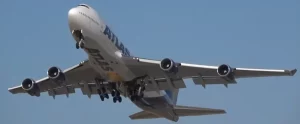Chapter 4:Quadratic Equation
Class 10 Case based problem of Chapter 4 quadratic eq 1
Class 10 Case based problem of Chapter 4 Quadratic eq 2
Case Based 4:- The two gears shown in the figure resemble two circle which touch each other externally. The sum of their areas is 130π sq. cm and distance between their centres is 14 cm.

(A) Taking the radius of one circle to be x cm, the quadratic equation for the situation described above is:
(a) x² – 16x + 63 = 0
(b) x² – 16x – 63 = 0
(c) x² – 14x + 33 = 0
(d) x² + 14x – 33 = 0
(B) The radii of two circles are:
(A) 3 cm and 11 cm
(b) 5 cm and 9 cm
(c) 4 cm and 10 cm
(d) 6 cm and 8 cm
(C) The roots of the quadratic equation abx² + (b² – ac)x – bc = 0 are:
(a) Real and equal
(b) Real and distinct
(c) No real roots exist
(d) None of the above
(D) The roots of the quadratic equation a²x² – 3abx + 2b² = 0 are:
(a) ![]()
(b) ![]()
(c) ![]()
(d) ![]()
(E) The value of p for which the quadratic equation x(x – 4) + p = 0 has real and distinct roots, is:
(a) p < 4 (b) p > 4
(c) p < -4 (d) p > -4
Solution:
(A) Answer (c) x² – 14x + 33 = 0
Explanation: Radius of one circle = x cm.
and the radius of second circle = (14 – x) cm
The area of first circle = π x² cm²
The area of the second circle = π(14 – x)² cm²
According to the question,
π x² + π(14 – x)² = 130 π
⇒ π(x² + 196 + x² – 28x) = 130π
⇒ 2x² – 28 x + 196 = 130
⇒ 2x² – 28 x + 196 – 130 = 0
⇒ 2x² – 28 x + 66 = 0
⇒ x² – 14 x + 33 = 0 ….(i)
(B) Answer (a) 3 cm and 11 cm
Explanation: Solving equation (i)
x² – 14 x + 33 = 0
⇒ x² – 11 x – 3 x + 33 = 0
⇒ x(x – 11) – 3(x – 11) = 0
⇒ (x – 11)(x – 3) = 0
⇒ x = 3, 11
Radius of one circle = 3 cm
Radius of second circle = 11 cm
(C) Answer (b) Real and distinct
Explanation: Given quadratic equation
abx² + (b² – ac)x – bc = 0
A = ab, B = b² – ac, C = – bc
Discrimnant (D) = B² – 4AC
= (b² – ac)² – 4(ab).(-bc)
![]()
![]()
![]()
The square of every integer is always positive
Hence, roots of the equation is Real and Distinct
(D) Answer (d) ![]()
Explanation: a²x² – 3abx + 2b² = 0
⇒ a²x² – 2abx – abx + 2b² = 0
⇒ ax(ax – 2bx) -b(ax – 2b) = 0
⇒ (ax – 2b)(ax – b) = 0
![]()
(E) Answer (a) p < 4
Explanation: The given quadratic equation
x(x – 4) + p = 0
⇒ x² – 4x + p =0
Roots of the equation is Real and distinct
Then, D > 0
b² – 4ac > 0
⇒ (-4)² – 4×1×p > 0
⇒ 16 – 4p > 0
⇒ 16 > 4p
⇒ p < 4
Case Based 5:- Due to some technical problems, an aeroplane started late by one hour from its starting point. The pilot decided to increase the speed of the aeroplane by 100 km/h from its usual speed., to cover a journey of 1200 km in time.

(A) The usual speed of the aeroplane is:
(a) 200 km/h (b) 300 km/h
(c) 400 km/h (d) 600 km/h
(B) The roots of the quadratic equation formed in this situation are:
(a) Real and Distinct
(b) Real and Equal
(c) No Real roots exist
(d) None of the above
(C) Which of the following is correct if the roots of the equation (a – b)x² + (b – c)x + (c – a) = 0 are equal ?
(a) 2c = b + a (b) 2b = c + a
(c) 2a = b – c (d) 2a = b + c
(D) The values of k for which the difference between the roots of the equation x² + kx + 3 = 0 is 2, is:
(a) 0 (b) ± 2
(c) ± 4 (d) ± 8
(E) The values of m and n if x = 2 and x = 3 are solutions of the equation 3x² – mx + 2n = 0; are:
(a) m = 9, n = 15 (b) m = 15, n = 9
(c) m = 3, n = 6 (d) m = 6, n = 15
Solution:- (A) Answer (b) 300 km/h
Explanation: Let the usual speed of plane = x km/h
increased speed of plane = (x + 100) km/h
According to the question
![]()
![]()
![]()
![]()
![]()
![]()
![]()
![]()
![]()
![]()
Usual speed of plane = 300 km/h
(B) Answer (a) Real and distinct
Explanation: Since, the roots are 300, -400
They are Real and Distinct
(C) Answer (d) b + c = 2a
Explanation:Given quadratic equation
(a – b)x² + (b – c)x + (c – a) = 0
A = a – b, B = b – c, C = c – a
Roots are equal
Then, D = B² – 4AC = 0
![]()
![]()
![]()
![]()
![]()
![]()
![]()
(D) Answer (d) ± 4
Explanation: The given quadratic equation
x² + kx + 3 = 0
a = 1, b = k, c = 3
![]()
![]()
![]()
Roots of the equation,
![]()
The difference between the roots = 2
![]()
![]()
![]()
![]()
Squaring both side
![]()
![]()
![]()
![]()
(E) Answer (b) m = 15, n = 9
Explanation: The solution of the quadratic equation 3x² – mx + 2n = 0 are
x = 2 and x = 3. they satisfy the equation
![]()
![]()
![]()
![]() ……..(i)
……..(i)
![]()
![]()
![]()
![]() ………..(ii)
………..(ii)
Substracting (ii) to (i) after multiplied by 2
![]()
![]()
![]()
putting in (i)
m – n = 6
![]()
![]()
![]()
Case Based 6:- The speed of a motor boat is 20 km/h. For covering the distance of 15 km, the boat took 1 hour more for upstream than downstream.

(A) Let speed of the stream be x km/h. Then speed of the motor boat in upstream will be:
(a) 20 km/h (b) (20 + x) km/h
(c) (20 – x) km/h (d) 2 km/h
(B) What is the relation between speed, distance and time ?
(a) Speed = (distance)/time
(b) distance = (speed)/time
(c) time = speed × distance
(d) speed = distance × time
(C) Which is the correct quadratic equation for the speed of the current ?
(a) x² + 30 x – 200 = 0
(b) x² + 20 x – 400 = 0
(c) x² + 30 x – 400 = 0
(d) x² – 20 x – 400 = 0
(D) What is the speed of current ?
(a) 20 km/h (b) 10 km/h
(c) 15 km/h (d) 25 km/h
(E) How much time boat took in down-stream ?
(a) 90 minutes (b) 15 minutes
(c) 30 minutes (d) 45 minutes
Solution:- (A) Answer (c) (20 – x) km/h
Explanation: Speed of motor boat = 20km/h
Let the speed of stream = x km/h
Hence, speed of boat in upstream = (20 – x) km/h
(B) Answer (a) Speed = Distance/Time
(C) Answer (c) x² + 30 x – 400 = 0
Explanation: Let the speed of stream = x km/h
speed of boat in upstream = (20 – x) km/h
Speed of boat in down-stream = (20 + x) km/h
According to the question
![]()
![]()
![]()
![]()
![]()
![]()
![]()
![]()
![]()
(D) Answer (b) 10 km/h
Explanation: Solving the quadratic equation x² + 30 x – 400 = 0
⇒ x² +40x – 10x – 400 =0$
⇒ x(x + 40) – 10(x + 40) = 0
⇒ (x + 40)(x – 10) = 0
⇒ x = 10, -40
Speed can not be negative
Hence, speed of the stream = 10 km/h
(E) Answer (c) 30 minutes
Explanation: Speed of boat in down-stream = (x + 20) km/h
= (10 + 20) = 30 km/h
Time taken in down-stream = Distance/speed
= 15/30 = 1/2 hour
= 30 minutes
Some other Case Based Question
Class 10: Case based problem of Chapter 4 quadratic eq 1
Class 10: Case based problem of Chapter 3 Pair of Linear eq 1
Class 10 :Case based problem of Chapter 3 Pair of Linear eq 2


